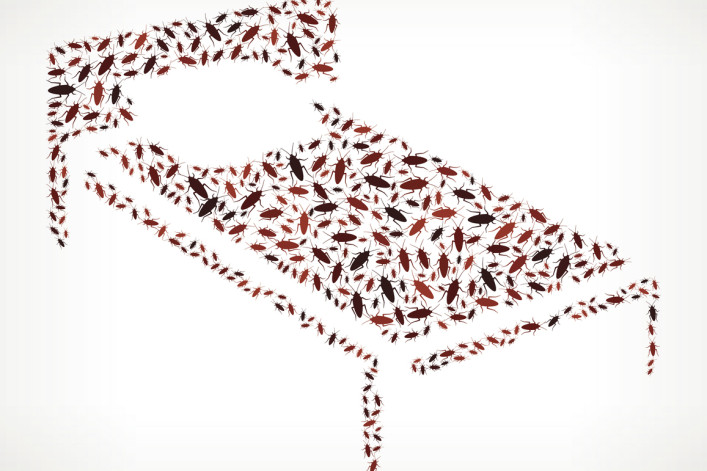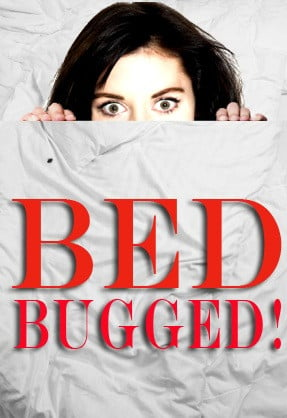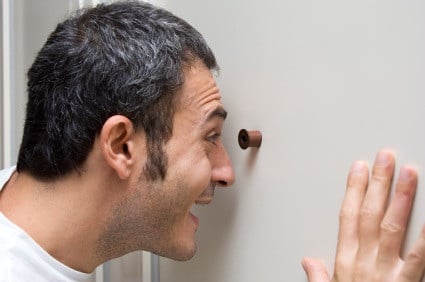How I got rid of bedbugs without using (too much) pesticide

iStock
Discovering the presence of bedbugs in your apartment is deeply horrifying, and will likely send you running to Google. Glued to a laptop in the middle of the night, imagining little critters skittering across the walls beyond the light of the screen, it's easy to be even more overwhelmed when you see all the information that's out there.
I went through my own bedbug saga in a rental apartment in Brooklyn a few years back. I'm no exterminator, but I did come out the other side (you can't take away my truth!), and what I found from weeks of harried research and trial and error is that pesticides aren't the be-all and end-all when it comes to eradicating the vampiric insect menace, which isn't to say that you should avoid them entirely. Rather, after poison alone failed to fully beat back the enemy hordes, a diversity of tactics helped us sleep at night knowing we'd be safe from another attempt to overrun our lines.
Also, my infestation wasn't extreme—my wife, who unlike me reacts to bedbug bites, had several here and there at a given time, but wasn't covered in them—so I suspect these tactics may not necessarily be replicable for those that are.
Here we go:
Deep breaths, everybody
Before I get into the minutia, if you have bed bugs, take a deep breath and take heart in knowing that it's a surmountable problem. There are specific, tangible steps that you can take to overcome this, and it can be over in weeks, not months.
First steps
Once we examined our mattress and saw the telltale black specks and blood spots, it was time to take action. As far as we could tell, the infestation was fairly localized to our bed—we checked the couches and chairs and books and didn't spot anything—but we didn't want to take any chances.
First, we vacuumed the crevices in our mattress and along the tracks of our bed frame, taking care to place the vacuum bag directly into a plastic bag and throw it away outside as soon as we finished, so as not to simply transfer the bed bugs from our bed to the nearest trash can.
At Sears, we bought covers for our mattress and box spring, so as to block any more bugs from making a home in either. We also dried all the sheets and all the clothes we could dry on high without damaging them (intense heat kills bed bugs), and stored our clothes and linens in plastic bags, only taking out one outfit at a time, and only for as long as we wore it.
We called an exterminator, too, of course, and he came and sprayed the bed-frame and baseboards. For a few days, things were calm. Then my wife started getting bitten again.
Think like a bedbug: When hunting bedbugs, you are the bait
It was around this time that we learned that those bedbugs that a pesticide spraying doesn't kill may retreat into the walls or other recesses, where they can remain dormant for months or longer than a year. The problem with relying primarily on spraying, we found, is that when the poison wears off, those surviving bugs will come back to feed.
This is where it is useful to think about how bedbugs actually operate, as much as it may make it difficult to sleep at night. The bugs are drawn to the heat our bodies give off and the carbon dioxide we exhale, so when they come out at night to drink their fill of blood, they will zero in on us no matter where we are. This is why it's a bad idea to move to another room, bed, or couch in response to an infestation—the bedbugs will just follow you.
Instead, you want to play it cool and act as the bait—really, you have no choice—while putting a series of fatal obstacles between you and the bugs.
While continuing to maintain our regimen of living out of trash bags, we went to the hardware store and bought bedbug traps and diatomaceous earth.
Diatomaceous earth is a white powder available at pet and hardware stores. Though not especially toxic to people or pets, the powder, made up of fossilized algae, saps the moisture from insects' exoskeletons, killing them. It's commonly used to treat fleas in chickens and kill slugs in gardens, among many other applications, and it's helpful in dealing with bedbugs. Bedbugs don't know to steer clear of the stuff, so they walk through it and it works its grisly magic.
To use it effectively, you want to think about paths that the bugs might take. In practice, for us this meant lining the floors along the baseboards, as well as the threshold leading to the stairwell, and the areas under our beds, couch, and upholstered chair. Our cat Brittany got pretty dry that month from all the diatomaceous earth dusting the apartment, and it didn't help that it was winter and the radiator was baking the moisture out of the air. It was so bad at one point that I took to dabbing the cat's fur with olive oil (which in retrospect was a weird solution) but she was all right otherwise.
The other ingredient in our holistic bedbug-annihilation recipe was the traps. These too work without pesticides, playing instead on the weaknesses in bedbugs' mechanics. The traps consist of double-rimmed plastic cups that you place around the feet of your bed. The insides of the cups are lined with talcum powder, and the bedbugs, drawn to your body's heat and exhalations, can climb up the outside lip but can't surmount the second, powder-coated one. As a result, when you wake up and check the traps, if you have an infestation, you'll find the thwarted bugs flailing around uselessly in the cup bottoms. Remember though that any stray sheet or blanket dangling to the ground will serve as a sort of bedbug staircase from the ground to you, rendering your traps irrelevant.
We placed traps at the feet of our bed, as well as under the other furniture in our house, just to be on the safe side, and stayed tucked in tight. We only spotted bugs in the ones around our bed, and each morning of the great struggle I'd carefully pinch my quarry in a tissue and flush it down the toilet.
Stay ever vigilant
By the time an exterminator sprayed a second time—we did another round of vacuuming ahead of this—the body count was down from several a day to a few. Given bedbugs' resilience and avoidance skills, we kept our traps and bags in place for months, vacuuming periodically and checking the traps every morning for months after we stopped seeing any bugs in them, just in case they mounted a second offensive. We swept up the diatomaceous earth, though. Poor Brittany.
You Might Also Like



























